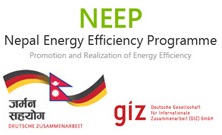Steam distribution system transports steam from the boiler (generator) to the various end uses depending upon the type of uses such as process heating application and power generation. Arrangement of pipelines and other several accessories to supply right quantity and quality of steam at the required point of utilization is steam distribution system. Steam is a common heat transport medium used in process applications and power generation because of its outstanding qualities such as ability to release heat at constant temperature, high heat content, ease of control and distribution and cheap and inert. It is used for generating power as well as for process heating applications in industries such as sugar, paper, fertilizer, refineries, petrochemicals, chemicals, food, synthetic fibre and textiles. Although distribution systems may appear to be passive, in reality, these systems regulate the delivery of steam and respond to changing temperature and pressure requirements. Consequently, proper performance of the distribution system requires careful design practices and effective maintenance. Steam distribution systems can be broken down into three different categories: under-ground, above-ground, and building sections. Selection of distribution components such as piping, insulation, valves, steam separators, steam accumulators, steam traps, steam meters etc can vary depending on the category.
Factors affecting the quality of steam
Most importantly, steam should be free from moisture. Saturated steam tends to give up its latent heat as it travels in the pipeline and becomes wet. Wet steam contains water droplets that have not evaporated. As these droplets do not contain any latent heat, they do not contribute much to the heat transfer. Hence, water should be removed before it enters the steam using equipment. A moisture separator at the entrance of the equipment serves the purpose where the water droplets are separated out and drained out through a trap.
The second important factor that affects the quality of steam is the presence of air. Air gets into steam space through various joints, etc., whenever the steam is condensed. This is due to partial vacuum formed because of the condensation. It is difficult to make joints 100% leak proof. Dissolved gases in the feed water like, CO2 & O2, also causes air carry over into the steam. It is important to remove this entrapped air from the steam that is supplied to the equipment. The removal of air is necessary for three reasons: air reduces steam temperature; air reduces rated heat transfer and air interferes with heat distribution.



